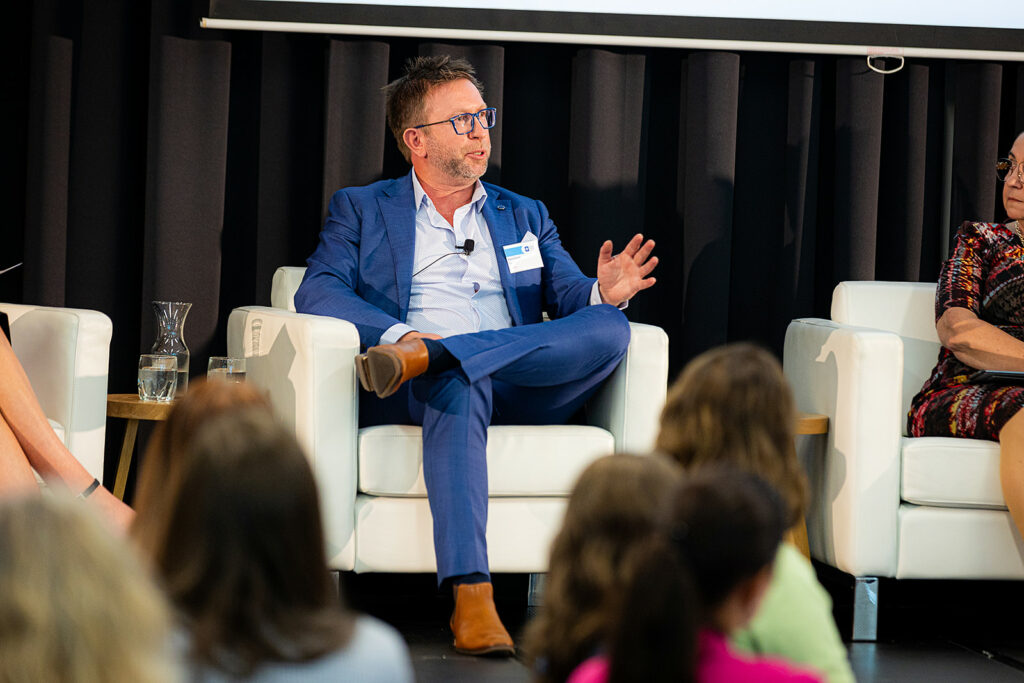Author: Miki Xu, Senior Director PERSOLKELLY China
The way we hire is changing. Technology is advancing rapidly, and recruitment is one of the areas seeing significant transformation, thanks to Artificial Intelligence (AI). Keeping up with the latest trends is crucial for companies that want to attract and retain top talent. This article dives into how AI is making recruitment more efficient and why it’s essential for today’s HR leaders to understand and leverage this technology.
Understanding AI in Recruitment
What is AI and Why Does It Matter in Recruitment?
Artificial Intelligence, or AI, refers to the use of computer systems to perform tasks that usually require human intelligence. In recruitment, AI plays a pivotal role by automating and optimising many aspects of the hiring process. This includes everything from sorting through thousands of resumes to predicting which candidates will perform well in a particular role. AI technology, powered by machine learning algorithms and natural language processing, can help recruiters make better decisions.
Where AI Stands in Recruitment Today?
AI is no longer just a buzzword; it’s becoming a standard tool in recruitment. A survey by LinkedIn found that 67% of hiring managers believe AI helps them save time during the recruitment process. Companies are using AI to source candidates, screen resumes, and even schedule interviews. However, as with any new technology, there are some misconceptions about AI’s role in recruitment.
Clearing Up Misconceptions About AI in Recruitment
One of the biggest fears is that AI will replace human recruiters. But AI is designed to assist, not replace the human touch. While AI can handle repetitive and time-consuming tasks, it doesn’t have the empathy or intuition that human recruiters bring to the table. Another misconception is that AI will introduce bias into hiring decisions. On the contrary, AI can help reduce bias when properly designed and implemented, focusing on data rather than subjective opinions.
Key Benefits of AI in Recruitment
1. Streamlining Administrative Tasks
Automating Resume Screening
Screening resumes is one of the most tedious and time-consuming parts of recruitment. AI assists in quickly sifting through large volumes of resumes, identifying the most relevant candidates, and ranking them based on specific criteria. This not only saves time but also ensures that no qualified candidate is missed due to human oversight.
Scheduling Interviews
Coordinating interviews can be a logistical nightmare, especially when dealing with multiple candidates and interviewers. AI tools can automate this process by analysing schedules, setting reminders, and scheduling meetings, freeing recruiters from this time-consuming task and allowing them to focus on more strategic activities.
2. Enhancing Candidate Experience
Personalised Communication
In today’s job market, a positive candidate experience is more important than ever. AI technology enables personalised communication with candidates, making them feel valued and informed throughout the recruitment process. For instance, AI can generate tailored emails that keep candidates updated on their application status.
Chatbots for Instant Responses
AI-powered chatbots are increasingly being used to provide instant answers to candidate questions. These chatbots can handle inquiries 24/7, providing information about the company and the recruitment process. This ensures candidates always feel supported and engaged, even outside of regular office hours.
3. Improving Decision Making
Data-Driven Insights for Better Hiring Decisions
AI provides recruiters with valuable data-driven insights, helping them make more informed decisions. By analysing large sets of data, AI can spot patterns and trends that might not be immediately obvious to human recruiters. This allows for decisions based on hard data, which reduces bias and increases the likelihood of finding the right fit.
Predictive Analytics for Candidate Success
AI can also use predictive analytics to assess which candidates are most likely to succeed in a given role. By analysing past hiring data, AI can help recruiters focus on candidates who have the highest potential, leading to better long-term outcomes.
AI Tools and Technologies in Recruitment
Overview of Popular AI Tools
Several AI tools are making waves in the recruitment industry. For instance, HireVue uses AI to analyse video interviews, assessing candidates based on facial expressions, tone of voice, and word choice. Pymetrics leverages neuroscience-based games to evaluate a candidate’s cognitive and emotional traits. Tools like Hiretual use AI to find and engage passive candidates across different platforms.
Examples of AI Technologies
AI in recruitment relies heavily on machine learning and natural language processing. Machine learning helps AI systems learn from data and improve over time, while natural language processing allows AI to understand and interact with human language. These technologies enable generative AI to screen resumes efficiently, evaluate candidate interactions, and even predict future performance.
Challenges and Ethical Considerations
Tackling the Challenges of AI Implementation
While AI offers many benefits, its implementation isn’t without challenges. One major issue is ensuring that the data used to train AI systems is high-quality and free from bias. Poor data can lead to inaccurate or biased results, which can harm the recruitment process. Additionally, integrating AI into existing systems can be costly and complex.
Addressing Ethical Concerns
The use of AI in recruitment also raises ethical questions, particularly around bias and data privacy. AI systems can unintentionally perpetuate biases if they’re trained on biased data. Moreover, there’s concern about how candidate data is used and protected. Transparency and regular audits of AI systems are essential to address these concerns.
Solutions and Best Practices
To mitigate these issues, companies should regularly audit their AI systems to identify and correct any biases. It’s also important to be transparent with candidates about how AI is being used in the recruitment process. Providing training for recruiters on how to use AI tools effectively and ethically is another key step in ensuring AI is used responsibly.
Future Trends in AI and Recruitment
What’s Next for AI in Recruitment?
As AI continues to evolve, we’re likely to see even more sophisticated tools and applications in recruitment. AI-powered assessments will become more common, offering deeper insights into candidates’ skills and cultural fit. Additionally, the integration of AI with project management tools will help streamline the entire hiring process, making it more efficient and effective.
The Impact of AI on Recruitment
AI is set to play an increasingly important role in recruitment. Advances in natural language processing and machine learning will enable AI to provide even more accurate and personalised candidate assessments. As these technologies improve, their impact on recruitment will continue to grow, leading to more streamlined and data-driven hiring processes.
The Human Touch in an AI-Driven World
Despite the advances in AI, human recruiters will remain essential. AI can handle the more repetitive and time-consuming tasks, but it can’t replace the human elements of empathy, judgment, and relationship-building that are crucial in recruitment. In an AI-enhanced environment, recruiters will have more time to focus on these aspects, leading to better outcomes for both candidates and employers.
Conclusion
AI is transforming recruitment by automating administrative tasks, enhancing the candidate experience, and improving decision-making processes to increase productivity. As AI capabilities continue to advance, its potential to revolutionise recruitment will only grow. By staying informed about the latest trends and best practices, HR professionals can leverage AI to attract and retain top talent more effectively.
We actively promote the use of AI among our recruiters to enhance efficiency and streamline the recruitment process. If you are interested in gaining insights into the future of recruitment, we invite you to join our team. Visit our career page for more information! Let’s work together to transform the way you hire!






